The groundcover salvia known as ‘Bee’s Bliss’ has been popular with gardeners and nursery professionals almost since its introduction in 1989 — and for good reason. With so many excellent salvias in the trade today, there are others that are more powerfully scented or more conspicuously floriferous but few are as accommodating, reliable, and inherently useful in the mostly summer-dry garden.
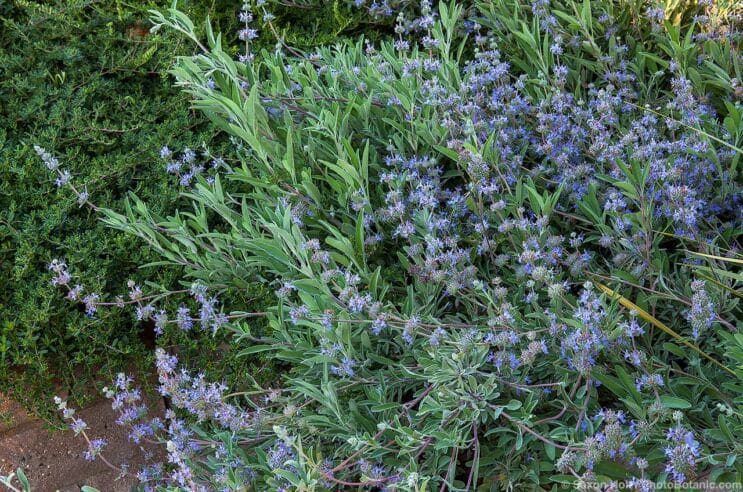
Salvia ‘Bee’s Bliss’
This cultivar was discovered at the University of California Botanical Garden in Berkeley and is believed to be a hybrid of Salvia leucophylla and S. sonomensis (or possibly S. clevelandii). ‘Bee’s Bliss’ stays low, about a foot to 18 inches tall and spreads 5-8 feet or more, with some stems prostrate and rooting as they go.
The broadly linear to narrowly oval aromatic leaves are velvety in texture and a striking silvery gray-green. The tiny, lightly fragrant, pale lavender flowers are tightly packed in whorls spaced out along pinkish stems that rise above the foliage from early spring to at least midsummer.
This is the one sage I cut back in fall, leaving others to provide seeds for birds and shelter for overwintering bees. ‘Bee’s Bliss’ grows so fast that by late winter or early spring it is already filling in again and it regains its full spread and density by midsummer. Pruning back in fall also provides many cuttings, virtually all of which take hold and are ready to plant out by early spring. Some even begin to flower while still in their one-gallon cans.
‘Bee’s Bliss’ is not fussy about soil but must have good drainage and is best with some protection from high summer heat. This sage is exceptionally fine for underplanting manzanitas, coast live oaks, or anything else that resents summer water as it survives even the driest months with zero irrigation. In late summer unwatered plants may lose many leaves and go mostly dormant but they start to revive as the weather cools and days shorten, even before the first rains.
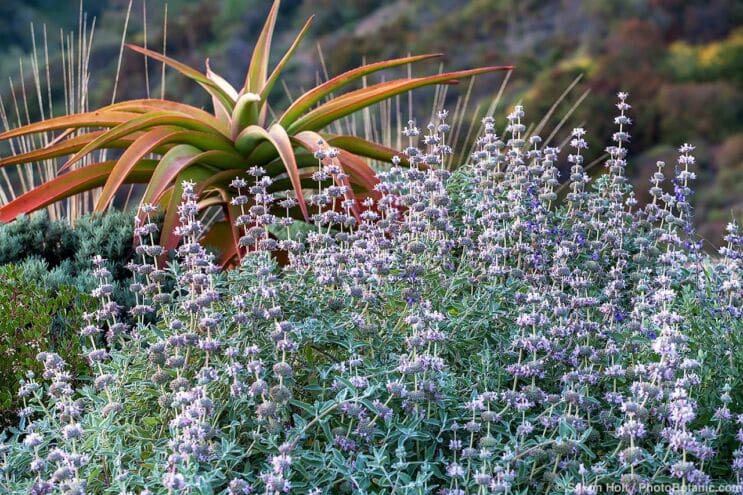
Salvia leucophylla ‘Point Sal’
There are, of course, other fine groundcover sages one might try. ‘Pt. Sal’ is a low-growing, wide-spreading selection of Salvia leucophylla with lavender-pink flowers. A little taller and more upright than ‘Bee’s Bliss’, it is said to accept moderate summer moisture.
Salvia sonomensis itself is less than a foot tall and wide-spreading with mid-green leaves and purplish blue flowers. It is flat, mat-forming, and flexible enough to closely follow ground contours and drape nicely over rocks and walls. ‘Gracias’, a cultivar of S. sonomensis and possibly a hybrid, is similar to ‘Bee’s Bliss’ and considered by some to be the same plant.
All are good habitat plants, especially attractive to bees, butterflies, and other pollinators. As are many other plants with strongly aromatic leaves, they are not attractive to deer.


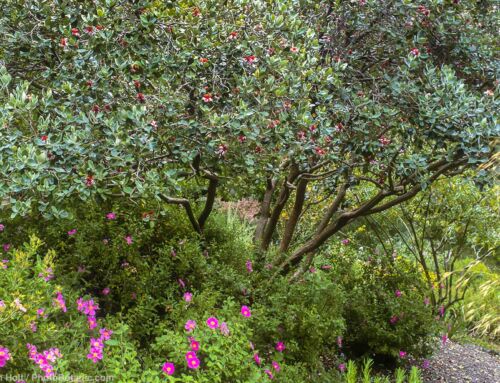
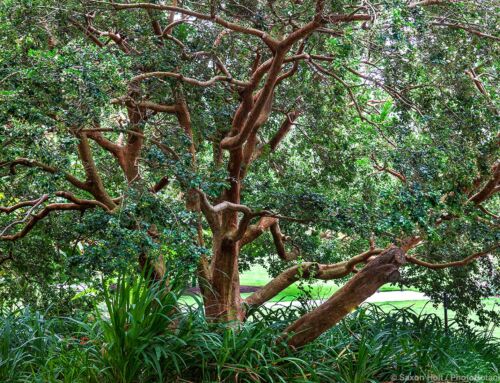
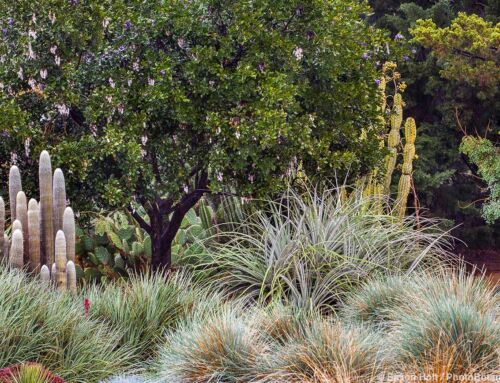
Leave A Comment